Relationship between the Distribution of Broodstock and Vorticity of Spawning Grounds of Four Major Chinese Carps in the Middle Reaches of the Yangtze River during Ecological Operation of the Three Gorges Dam
Abstract
:1. Introduction
2. Materials and Methods
2.1. Spawning Site Location Estimation of FMCC
2.2. Flow Field Measurement of Spawning Sites of FMCC
2.3. Calculation of Mean Vorticity in Spawning Ground Section
2.4. Positioning of Broodstock during Spawning Based on Ultrasonic Telemetry
3. Results and Discussion
3.1. Relationship between Spawning of FMCC and Cross-Section Mean Vorticity of Spawning Ground
3.2. Relationship between the Local Average Vorticity and Spawning Amount of the Fish at Each Section of the Spawning Ground during Ecological Operation of the Three Gorges Dam
3.3. Relationship between the Distribution of Marked Broodstock during the Breeding Period and Areas with High Correlation between Vorticity and Spawning
3.4. Issues with Small Sample Size and Analysis
4. Conclusions
- During the ecological operation of the Three Gorges Dam in 2014, the average vorticity of the cross-section of the Yidu spawning ground varied from 0.39/s to 0.46/s, and the Pearson correlation between the spawning amount of FMCC and the average vorticity of all cross-sections of the Yangtze River was 0.730. During the ecological operation in 2015, the average vorticity of all cross-sections of the spawning ground fluctuated from 0.47/s to 0.48/s. The Pearson correlation coefficient of the spawning amount of the FMCC and the average vorticity of all cross-sections of the river was 0.822, indicating a strong positive correlation between the spawning amount of FMCC and the average vorticity of all cross-sections of the river.
- The Pearson correlation coefficient between the partial vorticity of the section and the spawning of the fish was >0.95 during the ecological operation of the dam in 2014, in the middle of Sections 12, 16, 18, and 20 and the left bank of Section 19 of the Yidu spawning ground; and, during the ecological operation in 2015, on the right bank of Sections 1, 8, and 22, the middle of Sections 14, 15, and 22 and the left bank of Sections 8 and 19. This indicated that the cross-section vorticity changed in these areas. There was a significant positive correlation between the changes in the spawning amount of FMCC and average vorticity of cross-section. The special hydrodynamic conditions (increased vorticity) generated in these areas during the ecological operation of the dam could stimulate the spawning and reproduction of FMCC, resulting in a corresponding increase in spawning amount.
- Ultrasonic telemetry tests of broodstock fish in 2016 showed that the main distribution region and intense-activity areas of the broodstock fish in the spawning ground of Yidu were within a 490-m radius of receivers yd05 and yd06, mainly around the Quantong Piers of the Three Gorges Dam. In line with the high correlation between vorticity and spawning amount in 2014 and 2015, it is inferred that the river section near the Quantong Piers of the Three Gorges dam is a preferred area for FMCC spawning.
Author Contributions
Funding
Conflicts of Interest
References
- Duan, X.B.; Liu, S.P.; Huang, M.G.; Qiu, A.L.; Li, Z.H.; Wang, K.; Chen, D. Changes in abundance of larvae of the four domestic Chinese carps in the middle reach of the Yangtze River, China, before and after closing of the Three Gorges Dam. Environ. Biol. Fishes 2009, 86, 13–22. [Google Scholar] [CrossRef]
- Technical Report on Key Stations for Fishery Resources and Environmental Monitoring of the Three Gorges Project Ecological and Environmental Monitoring System (2007–2009); Yangtze River Fisheries Resources Management Committee: Shanghai, China, 2009.
- Yu, Z.T.; Zhou, C.S.; Deng, Z.L. A survey on the spawning grounds of the four famous Chinese carps in the Changjiang River after dammed by the key water control project at Gezhouba. Trans. Chin. Ichthyol. Soc. 1985, 4, 2–5. [Google Scholar]
- Peng, Q.D.; Liao, W.G.; Li, C.; Yu, X.Z. Impacts of Four Major Chinese Carps’ Natural Reproduction in the Middle Reaches of Changjiang River by Three Gorges Project since the Impoundment. J. Sichuan Univ. 2012, 44, 228–232. [Google Scholar]
- Wang, J.N.; Li, C.; Duan, X.B.; Liao, W.G. Identification of significant environmental factors affecting fish abundance by genetic programming. J. Hydraul. Eng. 2012, 43, 859–868. [Google Scholar]
- Peng, Q.D.; Liao, W.G.; Li, C.; Chen, D.Q. Influence of Three Gorges Reservoir Operation on Eco Hydrological Characteristics of the Middle Reaches of Yangtze River; China Water & Power Press: Beijing, China, 2008; pp. 511–515. [Google Scholar]
- Yi, B.L.; Yu, Z.T.; Liang, C.S. Gezhouba Water Control Project and the Four Major Chinese Carps in the Yangtze River; Hubei Science & Technology Press: Wuhan, China, 1988. [Google Scholar]
- Way, C.M.; Burky, A.J.; Bingham, C.R.; Miller, A.C. Substrate roughness, velocity refuges, and marcoinvertebrate abundance on artificial substrates in low Mississippi River. J. N. Am. Ethol. Soc. 1995, 14, 510–518. [Google Scholar]
- Crowder, D.W.; Diplas, P.; Crowder, D.W.; Diplas, P. Vorticity and circulation: Spatial metrics for evaluating flow complexity in stream habitats. Can. J. Fish. Aquat. Sci. 2002, 59, 633–645. [Google Scholar] [CrossRef]
- Yang, Y.; Yan, Z.M.; Chang, J.B. Computation and analysis of the cross-section mean vorticity in Chinese sturgeon spawning area. Adv. Water Sci. 2007, 18, 701–705. [Google Scholar]
- Wang, Y.K.; Xia, Z.Q.; Wang, G.H.; Yang, Y. Chinese sturgeon spawning ground horizontal mean vorticity computation and analysis. Acta Ecol. Sin. 2009, 29, 538–544. [Google Scholar]
- Chen, J.; Li, Q.Q. Assessment of eco-operation effect of Three Gorges Reservoir during trial run period. J. Yangtze River Sci. Res. Inst. 2015, 32, 1–6. [Google Scholar]
- Baldwin, C.C.; Brito, B.J.; Smith, D.G.; Weigt, L.A.; Escobar-Briones, E. Identification of early life-history stages of Caribbean apogon (Perciformes: Apogonidae) through DNA Barcoding. Zootaxa 2011, 3133, 1–36. [Google Scholar]
- Wibowo, A.; Wahlberg, N.; Vasemägi, A. DNA barcoding of fish larvae reveals uncharacterised biodiversity in tropical peat swamps of New Guinea, Indonesia. Mar. Freshw. Res. 2017, 68, 1079. [Google Scholar] [CrossRef]
- Welch, D.W.; Melnychuk, M.C.; Rechisky, E.R.; Porter, A.D.; Jacobs, M.C.; Ladouceur, A.; McKinley, R.S; Jackson, G.D. Freshwater and marine migration and survival of endangered Cultus Lake sockeye salmon (Oncorhynchus nerka) smolts using POST, a large-scale acoustic telemetry array. Can. J. Fish. Aquat. Sci. 2009, 66, 736–750. [Google Scholar] [CrossRef]
- Whitty, J.M.; Morgan, D.L.; Peverell, S.C.; Thorburn, D.C.; Beatty, S.J. Ontogenetic depth partitioning by juvenile freshwater sawfish (Pristis microdon: Pristidae) in a riverine environment. Mar. Freshw. Res. 2009, 60, 306–316. [Google Scholar] [CrossRef]
- Uglem, I.; Bjørn, P.A.; Dale, T.; Kerwath, S.; Økland, F.; Nilsen, R.; Aas, K.; Fleming, I.; McKinley, R.S. Movements and spatiotemporal distribution of escaped farmed and local wild Atlantic cod (Gadus morhua L.). Aquacult. Res. 2010, 39, 158–170. [Google Scholar] [CrossRef]
- Yeiser, B.G.; Heupel, M.R.; Simpfendorfer, C.A. Occurrence, home range and movement patterns of juvenile bull (Carcharhinus leucas) and lemon (Negaprion brevirostris) sharks within a Florida estuary. Mar. Freshw. Res. 2008, 59, 489–501. [Google Scholar] [CrossRef]
- Collins, A.B.; Heupel, M.R.; Simpfendorfer, C.A. Spatial distribution and long-term movement patterns of Cownose Rays Rhinoptera bonasus within an estuarine river. Estuaries Coasts 2008, 31, 1174–1183. [Google Scholar] [CrossRef]
- Childs, A.-R.; Cowley, P.D.; Naesje, T.F.; Booth, A.J.; Potts, W.M.; Thorstad, E.B.; Økland, F. Do environmental factors influence the movement of estuarine fish? A case study using acoustic telemetry. Estuar. Coast. Shelf Sci. 2008, 78, 227–236. [Google Scholar] [CrossRef] [Green Version]
- Ortega, L.A.; Heupel, M.R.; Beynen, P.V.; Motta, P.J. Movement patterns and water quality preferences of juvenile bull sharks (Carcharhinus leucas) in a Florida estuary. Environ. Biol. Fishes 2009, 84, 361–373. [Google Scholar] [CrossRef]
- Moore, A.; Russell, I.C.; Potter, E.C.E. The effects of intraperitoneally implanted dummy acoustic transmitters on the behavior and physiology of juvenile Atlantic salmon. J. Fish Biol. 1990, 37, 713–721. [Google Scholar] [CrossRef]
- Mjaatvedt, C.H.; Kern, C.B.; Norris, R.A.; Fairey, S.; Cave, C.L. Normal distribution of melanocytes in the mouse heart. Anatomical Rec. Adv. Integr. Anat. Evol. Biol. 2010, 285A, 748–757. [Google Scholar] [CrossRef] [PubMed]
- Howland, P.; Wang, J.; Park, H. Solving the small sample size problem in face recognition using generalized discriminant analysis. Pattern Recognit. 2006, 39, 277–287. [Google Scholar] [CrossRef]
- Lee, S.; Emond, M.J.; Bamshad, M.J.; Barnes, K.C.; Rieder, M.K.; Nickerson, D.A.; NHLBI GO Exome Sequencing Project—ESP Lung Project Team; Christiani, D.C.; Wurfel, M.M.; Lin, X. Optimal unified approach for rare-variant association testing with application to small-sample case-control whole-exome sequencing studies. Am. J. Hum. Genet. 2012, 91, 224–237. [Google Scholar] [CrossRef] [PubMed]
- Lehký, D.; Novák, D. Solving inverse structural reliability problem using artificial neural networks and small-sample simulation. Adv. Struct. Eng. 2012, 15, 1911–1920. [Google Scholar] [CrossRef]
- Roff, D.A.; Bentzen, P. The statistical analysis of mitochondrial DNA polymorphisms: Chi 2 and the problem of small samples. Mol. Biol. Evol. 1989, 6, 539–545. [Google Scholar] [PubMed]
- Wang, M.; Perera, A.; Gutierrez-Osuna, R. Principal discriminants analysis for small-sample-size problems: Application to chemical sensing. Sensors 2005, 2, 591–594. [Google Scholar]
- Survey Team of Spawning Grounds of Domestic Fishes in Changjiang River. A survey on the spawning grounds of the “four famous Chinese carps” in the Changjiang River after dammed by the key water control project at Gezhouba. J. Fish. Chin. 1982, 6, 287–305. [Google Scholar]
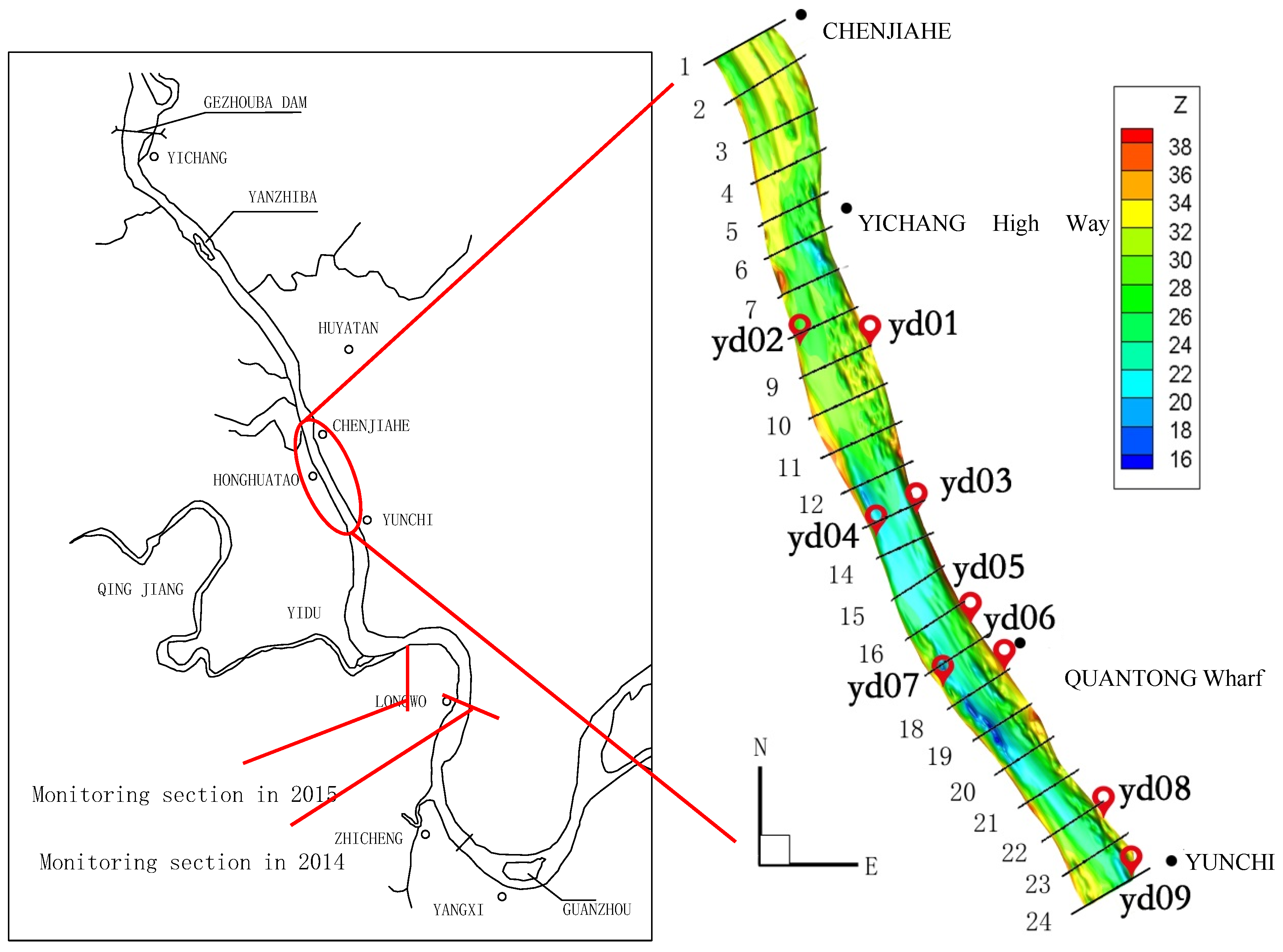
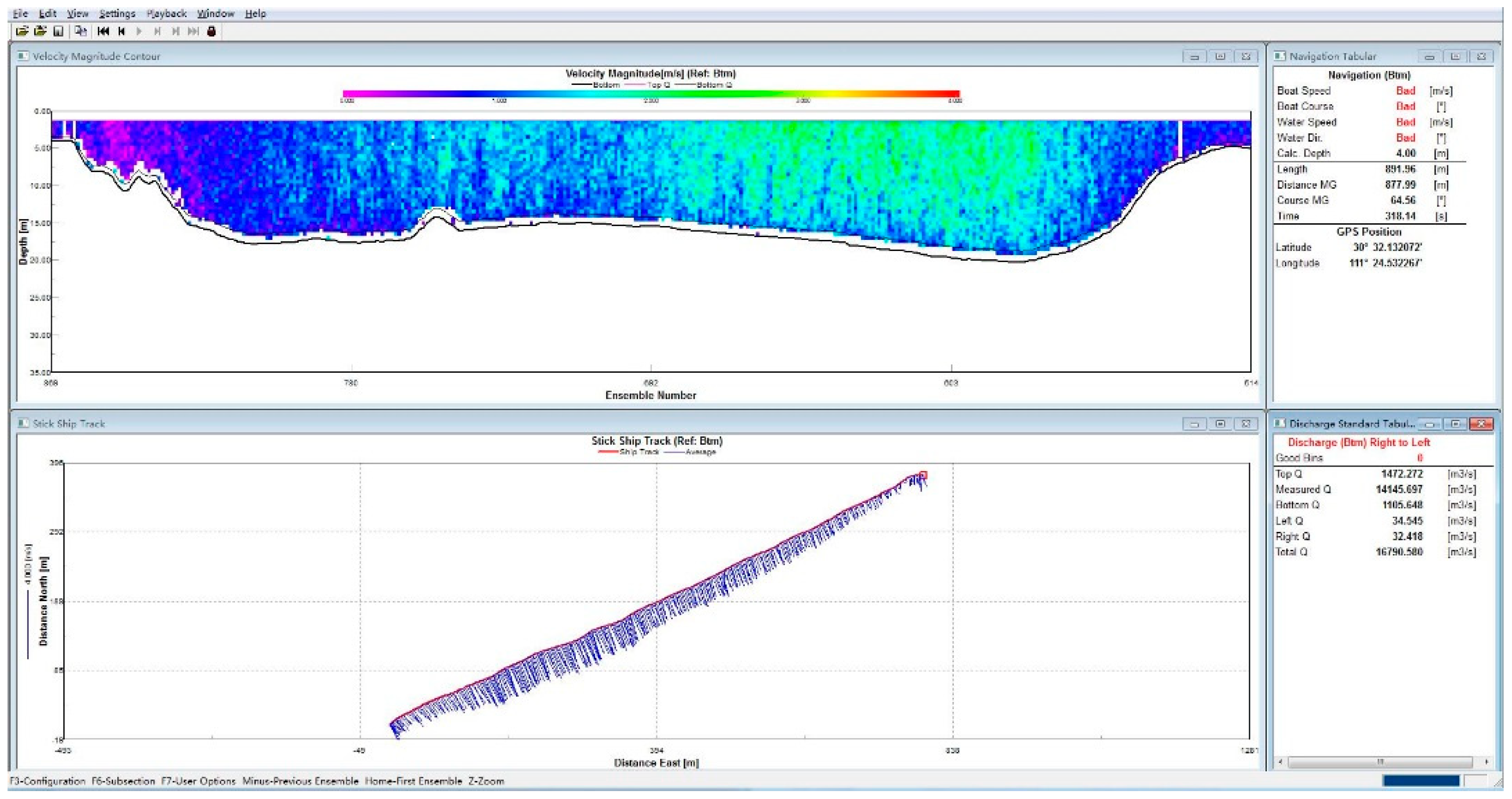

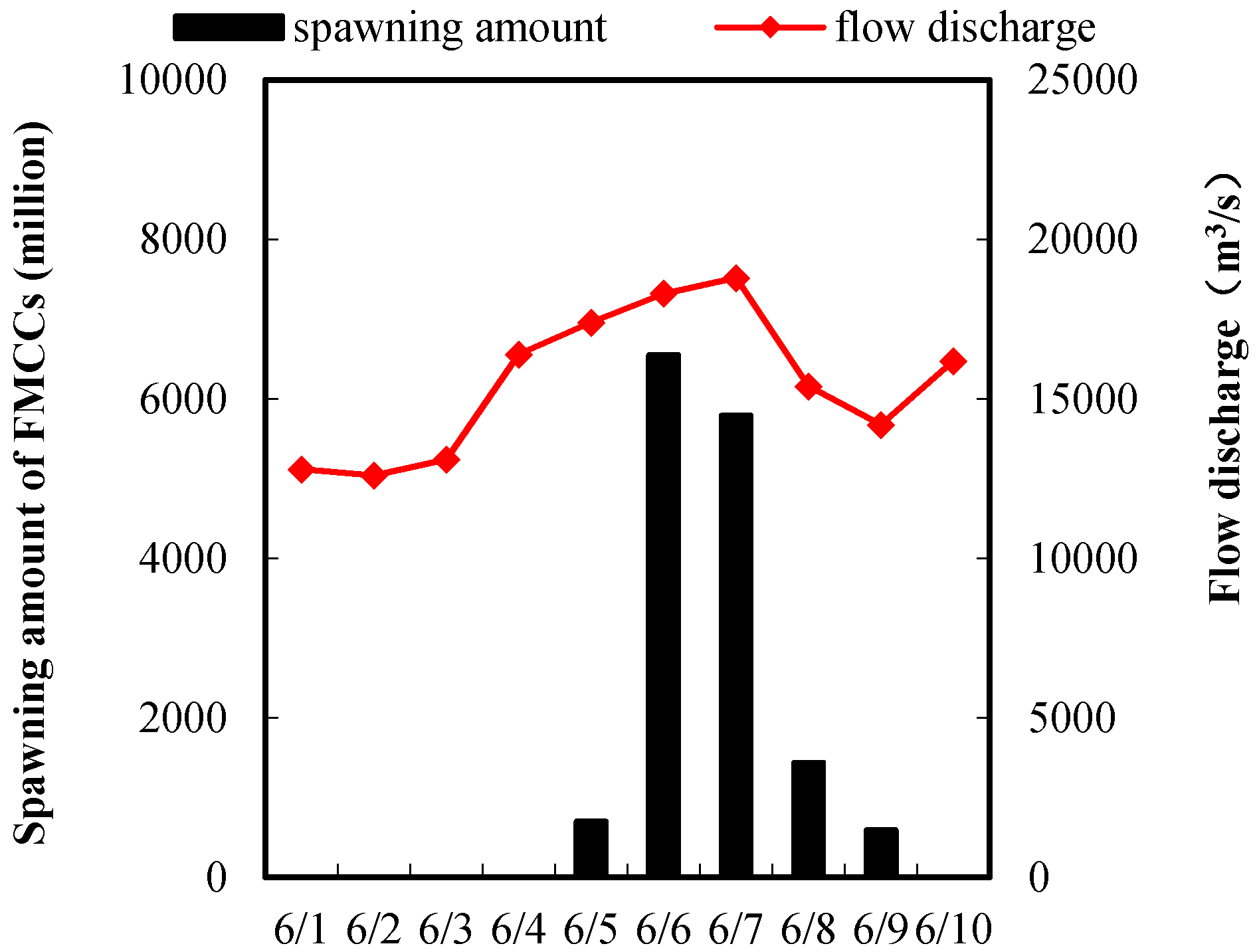

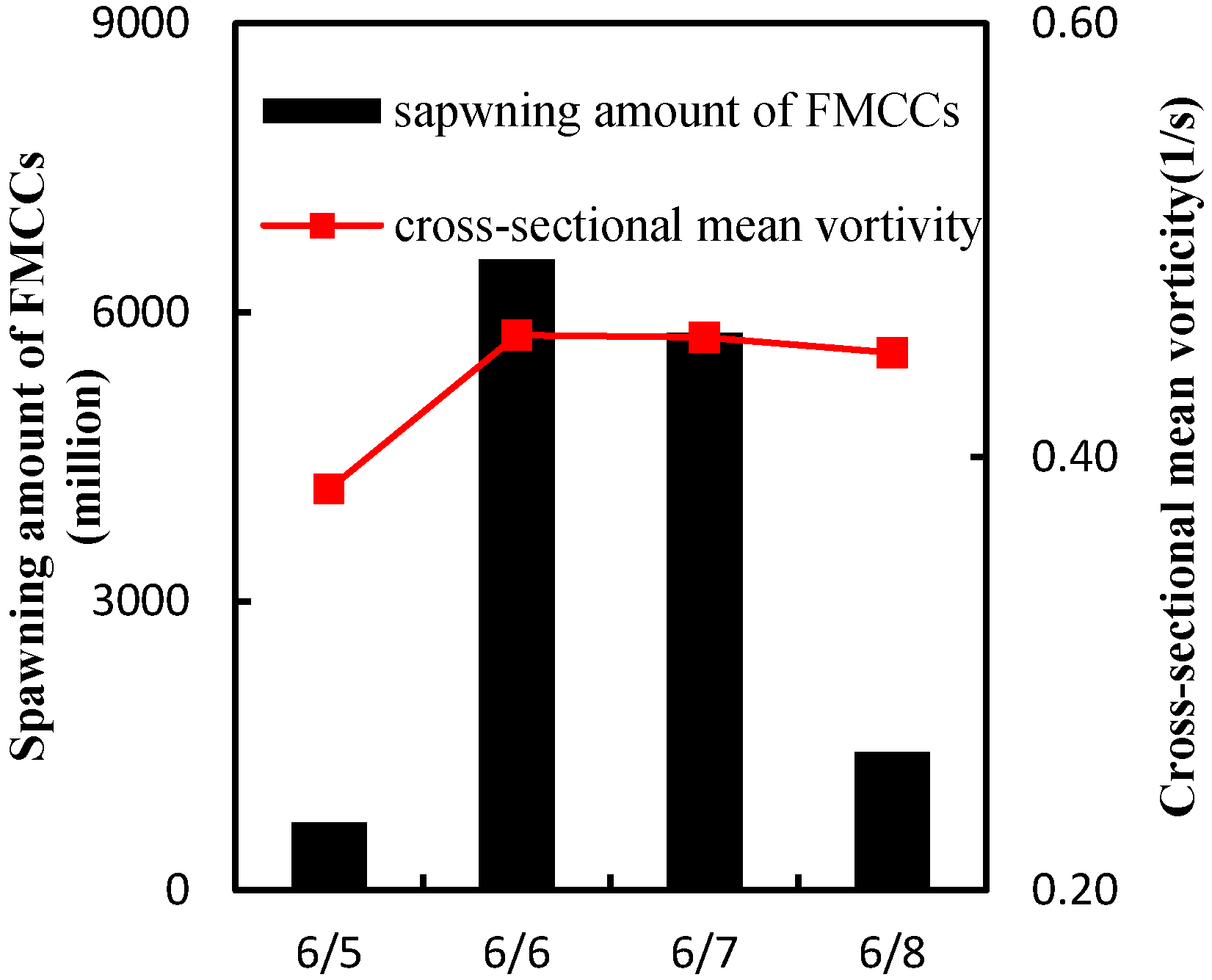
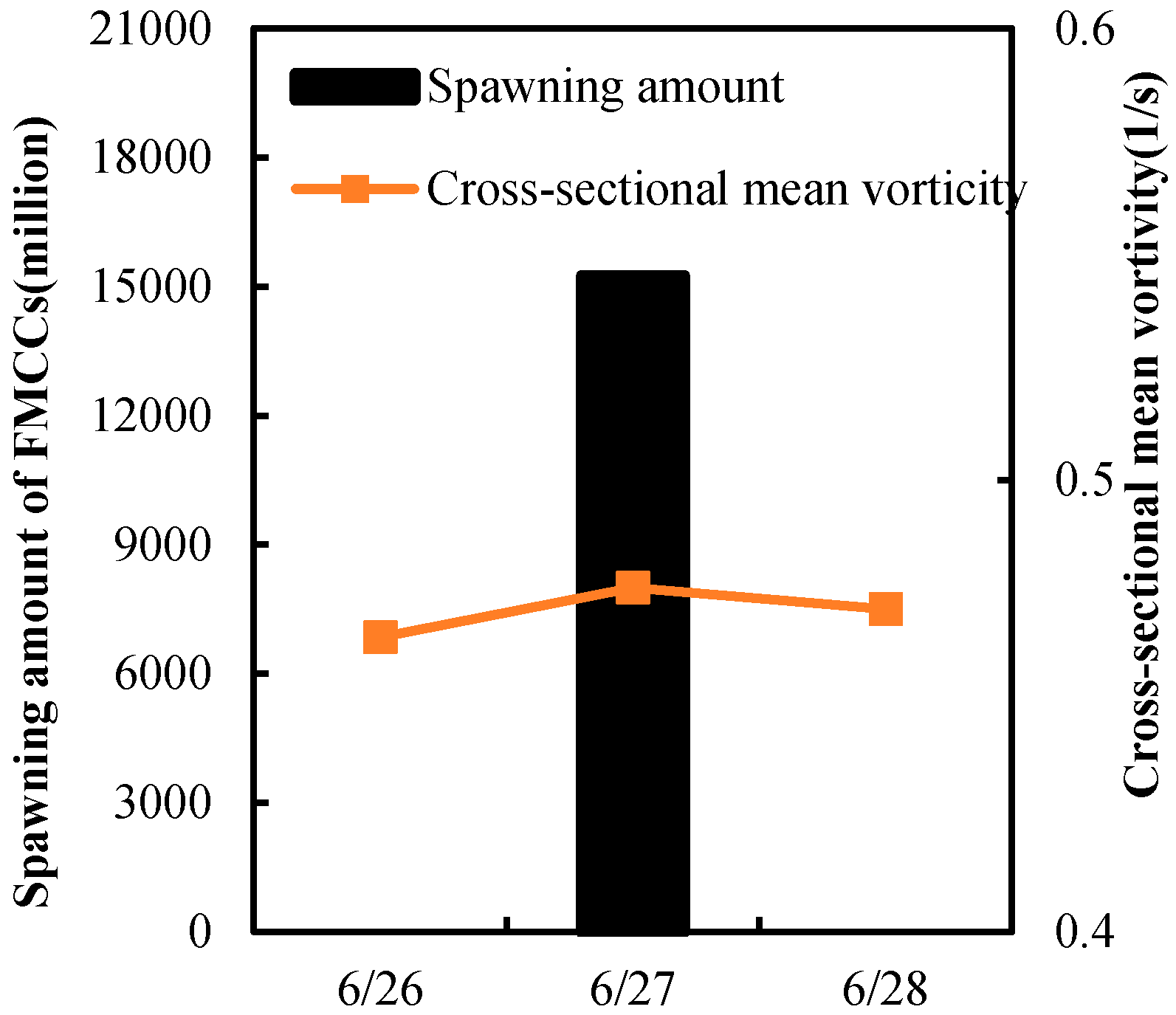

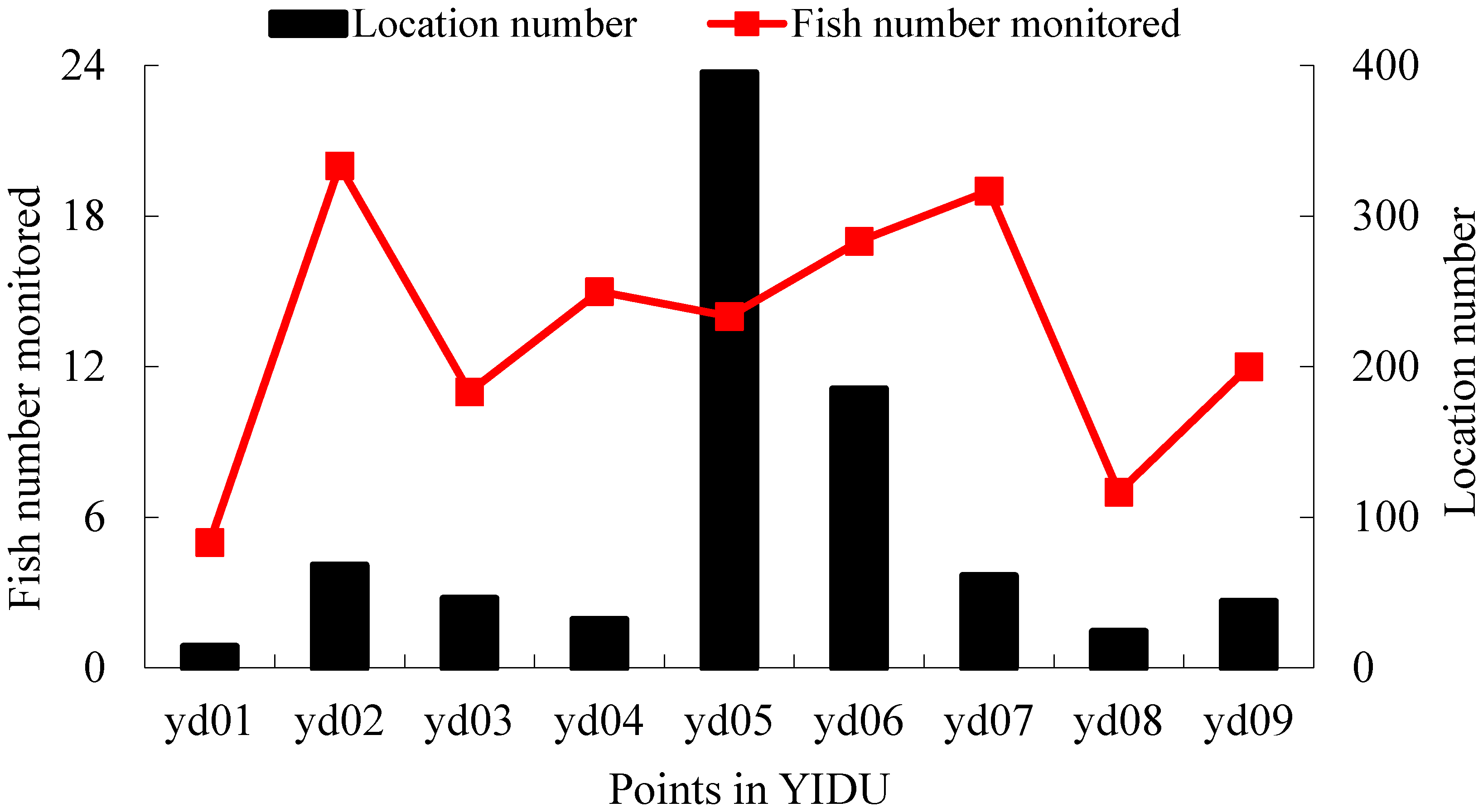
| Section | Pearson Correlation Coefficient | ||
|---|---|---|---|
| at the Left Bank | in the Middle | at the Right Bank | |
| 1 | 0.883 | 0.547 | −0.669 |
| 2 | −0.136 | −0.767 | −0.142 |
| 3 | 0.286 | −0.085 | 0.398 |
| 4 | 0.147 | −0.417 | 0.402 |
| 5 | 0.035 | 0.427 | 0.831 |
| 6 | 0.134 | −0.315 | 0.739 |
| 7 | 0.484 | 0.543 | 0.852 |
| 8 | 0.852 | 0.717 | 0.195 |
| 9 | −0.881 | 0.728 | 0.403 |
| 10 | −0.231 | 0.800 | 0.385 |
| 11 | 0.478 | 0.679 | −0.443 |
| 12 | 0.581 | 0.961 * | 0.230 |
| 13 | 0.478 | 0.505 | 0.811 |
| 14 | 0.786 | 0.566 | −0.348 |
| 15 | 0.607 | 0.920 | −0.045 |
| 16 | 0.708 | 0.988 * | 0.209 |
| 17 | −0.263 | 0.526 | 0.083 |
| 18 | 0.402 | 0.972 * | 0.878 |
| 19 | 0.999 * | 0.916 | −0.039 |
| 20 | 0.855 | 0.976 * | 0.798 |
| 21 | 0.916 | 0.946 | 0.037 |
| 22 | −0.075 | 0.564 | 0.168 |
| 23 | 0.697 | −0.349 | 0.901 |
| 24 | −0.624 | 0.764 | −0.269 |
| Section | Pearson Correlation Coefficient | ||
|---|---|---|---|
| at the Left Bank | in the Middle | at the Right Bank | |
| 1 | 0.743 | 0.064 | −0.976 * |
| 2 | 0.059 | 0.642 | −0.908 |
| 3 | −0.617 | 0.534 | −0.618 |
| 4 | −0.859 | −0.687 | −0.325 |
| 5 | 0.759 | −0.383 | −0.237 |
| 6 | 0.462 | 0.440 | −0.813 |
| 7 | 0.410 | −0.621 | −0.561 |
| 8 | −0.984 * | −0.649 | 0.992 * |
| 9 | −0.902 | −0.288 | −0.987 |
| 10 | −0.451 | 0.536 | −0.532 |
| 11 | 0.930 | −0.544 | 0.067 |
| 12 | 0.513 | −0.987 | 0.686 |
| 13 | 0.030 | −0.998 | 0.924 |
| 14 | −0.835 | 0.972 * | 0.703 |
| 15 | −0.669 | 0.958 * | 0.823 |
| 16 | 0.555 | −0.312 | 0.537 |
| 17 | −0.049 | −0.708 | −0.905 |
| 18 | 0.778 | 0.234 | −0.433 |
| 19 | 0.954 * | −0.901 | −0.239 |
| 20 | −0.768 | 0.266 | −0.496 |
| 21 | 0.145 | 0.580 | −0.898 |
| 22 | 0.662 | 0.998* | 0.996 * |
| 23 | −0.928 | 0.915 | 0.935 |
| 24 | −0.896 | −0.641 | −0.628 |
© 2018 by the authors. Licensee MDPI, Basel, Switzerland. This article is an open access article distributed under the terms and conditions of the Creative Commons Attribution (CC BY) license (http://creativecommons.org/licenses/by/4.0/).
Share and Cite
Liu, M.; Lin, J.; Peng, Q.; Yu, L.; Chen, D.; Liu, S.; Duan, X. Relationship between the Distribution of Broodstock and Vorticity of Spawning Grounds of Four Major Chinese Carps in the Middle Reaches of the Yangtze River during Ecological Operation of the Three Gorges Dam. Water 2018, 10, 1487. https://doi.org/10.3390/w10101487
Liu M, Lin J, Peng Q, Yu L, Chen D, Liu S, Duan X. Relationship between the Distribution of Broodstock and Vorticity of Spawning Grounds of Four Major Chinese Carps in the Middle Reaches of the Yangtze River during Ecological Operation of the Three Gorges Dam. Water. 2018; 10(10):1487. https://doi.org/10.3390/w10101487
Chicago/Turabian StyleLiu, Mingdian, Junqiang Lin, Qidong Peng, Lixiong Yu, Daqing Chen, Shaoping Liu, and Xinbin Duan. 2018. "Relationship between the Distribution of Broodstock and Vorticity of Spawning Grounds of Four Major Chinese Carps in the Middle Reaches of the Yangtze River during Ecological Operation of the Three Gorges Dam" Water 10, no. 10: 1487. https://doi.org/10.3390/w10101487
APA StyleLiu, M., Lin, J., Peng, Q., Yu, L., Chen, D., Liu, S., & Duan, X. (2018). Relationship between the Distribution of Broodstock and Vorticity of Spawning Grounds of Four Major Chinese Carps in the Middle Reaches of the Yangtze River during Ecological Operation of the Three Gorges Dam. Water, 10(10), 1487. https://doi.org/10.3390/w10101487





